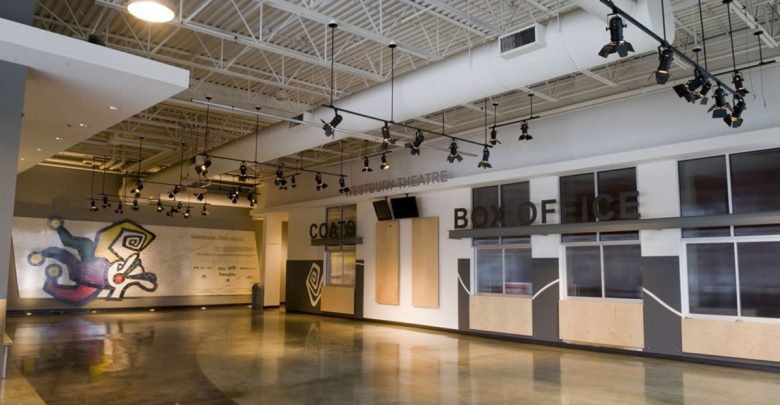“The Cardiac Shadow” spoke to the unspeakable
 Supplied
Supplied What: The Cardiac Shadow
Who: Good Women Dance Collective & Northern Light Theatre
When: January 18 to February 2, 2019
Where: The Studio Theatre in the ATB Financial Arts Barns
A screen flickered to life onstage.
Against the backdrop of his young daughter ambling through a snowy bank, German SS Doctor Sigmund Rascher (Vance Avery) delivered a chilling monologue explaining his experiment: after exposing male subjects to freezing conditions, he would place them next to naked women to evaluate possible treatments for hypothermia.
As he spoke, four women entered — their steps laborious, their faces gaunt and blank. The screen became a bed on which they silently huddled together. Through voiceovers, the women revealed the strings of experiences or dreams onto which they clutched in their bleak present.
Each monologue became a melody to which the corresponding woman danced, expressing thoughts and feelings that words cannot, entering a space outside of the atrocities of their condition, moving with the freedom of which they’ve been robbed.
Formally, The Cardiac Shadow was a product of multidisciplinary excellence, weaving together theatre with film, dance, and voice acting to convey the strength of these women and their search for comfort. Sound and lighting were used creatively, often hauntingly, painting the scenes with visceral emotions.
However, the show’s content lacked nuance. It had potential to explore the complexity of human experiments or the humanity of Nazis who were capable of such clinical violence. Of course, that would have been a completely different story, one that doesn’t need to take precedence over the show’s focus on the four women’s individual humanity.
Regardless, it would have been possible to further explore the women’s stories, perhaps with a focus on why they “volunteered” or on their relationships with each other.
Although I found that the individual stories were too disjointed to explore pain deeply, I appreciated that the show refrained from sensationalising violence. There’s no one way to represent trauma, and enough works about the Holocaust pay attention to visible, physical forms of it. The Cardiac Shadow tried to break that tradition by illuminating the spirits and voices of these women, giving complexity to their victimhood by sharing parts of their lives that weren’t to do with their torture.
In the intricate set design were brilliantly lit peepholes through which the scientists observed the women; at the front of the stage were lines of barbed wire, closing them off to the outside world. As the scientists caught mere glimpses of them, so too did we, acting almost as voyeurs of their vulnerable positions.
While this was a powerful statement about our limited access to these women’s lives and the stories that were killed with them, it’s also a reminder that the show can only scratch the surface of the trauma they felt.




